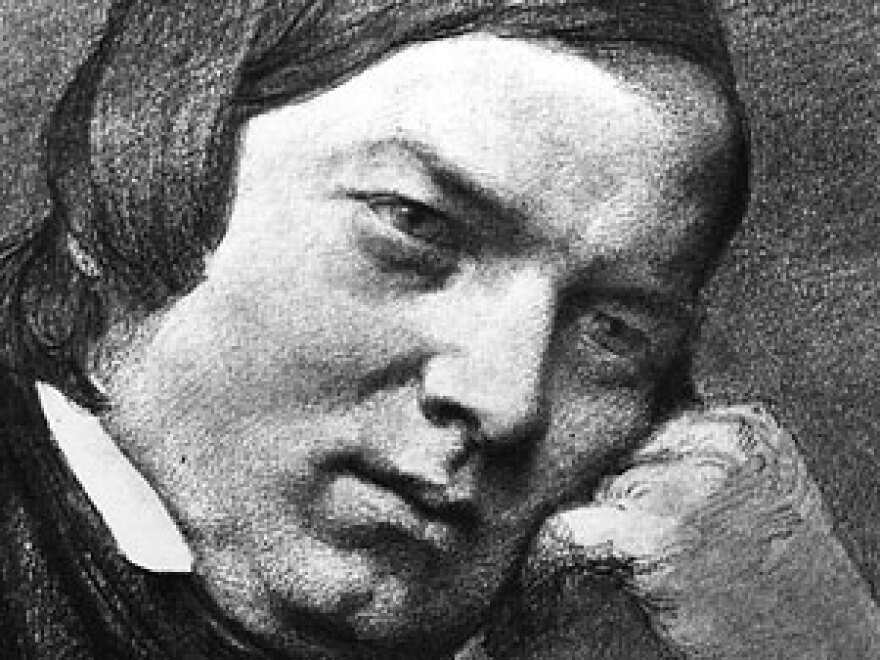I have recently discovered a deep passion for the symphonies of Robert Schumann. Up until now, these pieces were elusive and unpredictable — more than a little like Schumann himself. The music has left me wanting to better understand this complicated composer.
Schumann was born into a family filled with writing. His father authored an eclectic range of books, from dictionaries and address books to romantic medieval novels. Fueled by his love for literature, the young Schumann let his prodigious imagination run wild, a practice he continued right up through adolescence and adulthood. He lived with imaginary companions in a heightened mental state that foreshadowed his lifelong battle with what doctors today would diagnose as severe bipolar disorder.
Shifting Toward Music
Schumann discovered music a little later in life and came to the conclusion that it held an even greater potential for artistic and spiritual transcendence than that offered by literature. He was basically self-taught as a pianist and composer until he met Friedrich Wieck in Leipzig, becoming his piano student instead of studying for a law degree. This relationship changed the course of Schumann's life. It redirected him to a career in music and introduced him to Clara, who at age 9 was a phenomenal child prodigy, piano virtuoso and composer.
Schumann composed primarily for the piano and combined his passion for music and literature by writing hundreds of songs. But it was not until he was 30 (and married to Clara, then 21) that he began writing symphonies.
Typically for Schumann, when he was in a manic state he would compose feverishly, but when he fell into a depressive state, he was virtually paralyzed. It makes me wonder: What if Schumann had Prozac or lithium? Would his creativity have been helped or hampered by these modern, so-called wonder drugs?
Would his autobiographical Second Symphony tell a different story? As it stands, I hear the music pulsing with Schumann's journey from abject depression to triumph and joy. It's a parallel to Beethoven's own personal journey in his Symphony No. 5.
Symphonic Mood Swings
The similarities would not have eluded audiences of the time. Listeners to Schumann's Second Symphony would have recognized a Beethoven-styled "fate theme." It appears immediately in the brass at the beginning and returns repeatedly throughout the symphony, but in ever-changing contexts, mirroring Schumann's own emotional landscape.
As the first movement reaches its joy-filled conclusion, the fate motto reappears and helps us transition to the fantastic coda, or summary section. This extended coda offers another tribute to Beethoven and clearly sets the stage for the amazing codas that would come later from Schumann's young friend, Johannes Brahms.
In the second movement, Schumann takes Beethoven's idea of the scherzo to new heights by adding not just one, but two trio sections. The second trio section begins with a seemingly romantic character, but then detours into a Bach-styled fugue, spurred by a theme based on the letters in Bach's name (B flat, A , C, B natural). This type of encoding was a hallmark of Schumann's world of secrets and fantasy. (His "Clara motif" was a descending fifth, for the five letters of her name, and can be found in many of his works.) The fate motto reappears at the end of the movement and shares the spirited mood of the scherzo — the word itself meaning "joke" in Italian.
The third movement finds Schumann at his absolute best in terms of a gorgeous singing melody. This gives way to another baroque-influenced fugue, again paying tribute to Bach, whose music had recently helped Schumann emerge from a devastating bout of depression. It seems like the act of organizing the sound, with fugues in particular, provided the composer with some sense of relief.
The symphony's finale sums up all that came before, exploring all the moods of the previous movements. The trio section from the scherzo is recalled, and the fate motto quietly rejoins and brings us to a triumphant conclusion.
Homemade Schumann
Robert Schumann's chamber music has always held a special place in my heart. I used to play his piano quartet with my parents and our dear family friend, Seymour Bernstein, on piano. My father, LaMar, would play viola; my mother, Ruth, played the cello; and I played the violin part. Those were magical performances that will remain with me always.
And now, experiencing a deep connection with Schumann's symphonies extends and reinvigorates my childhood love for his music.
Copyright 2022 NPR. To see more, visit https://www.npr.org.



